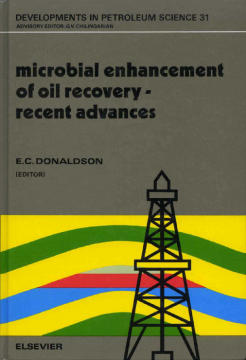
Additional Information
Book Details
Abstract
This conference was instituted to examine field activities in Microbial Enhancement of Oil Recovery. The U.S. Department of Energy has sponsored several field projects and the details from some of these were presented, as well as a few from industry. The balance of the program was concerned with new developments in research.
Today's oil production technology leaves one third to one half of the original oil in place in the reservoir at abandonment of secondary recovery (waterflooding). This leaves a very large target for microbial enhanced oil recovery which was shown by the research papers of this conference to be capable of producing up to 50% of the residual oil. The field trials show that the normal projected oil production decline curve can be reversed, or leveled off by microbial enhancement of oil recovery.
This conference has shown that a variety of applications are possible to correct oilfield problems as well as to enhance oil recovery. Among these is the suppression of hydrogen sulfide production which alone is a tremendous advance because of the large quantity of sour oil production. If hydrogen sulfide production can be curtailed it would increase the value of the produced oil, decrease it toxicity, and largely decrease it corrosiveness. All of these would be welcome both in the field and at the petroleum refinery where special precautions must be taken to process sour crude oil.
Another very important discovery is the ability of certain bacteria to eliminate paraffin deposition around the producing well and in the tubulars. This is a welcome improvement for many producers who have considerable difficulty in controlling paraffin deposition.
